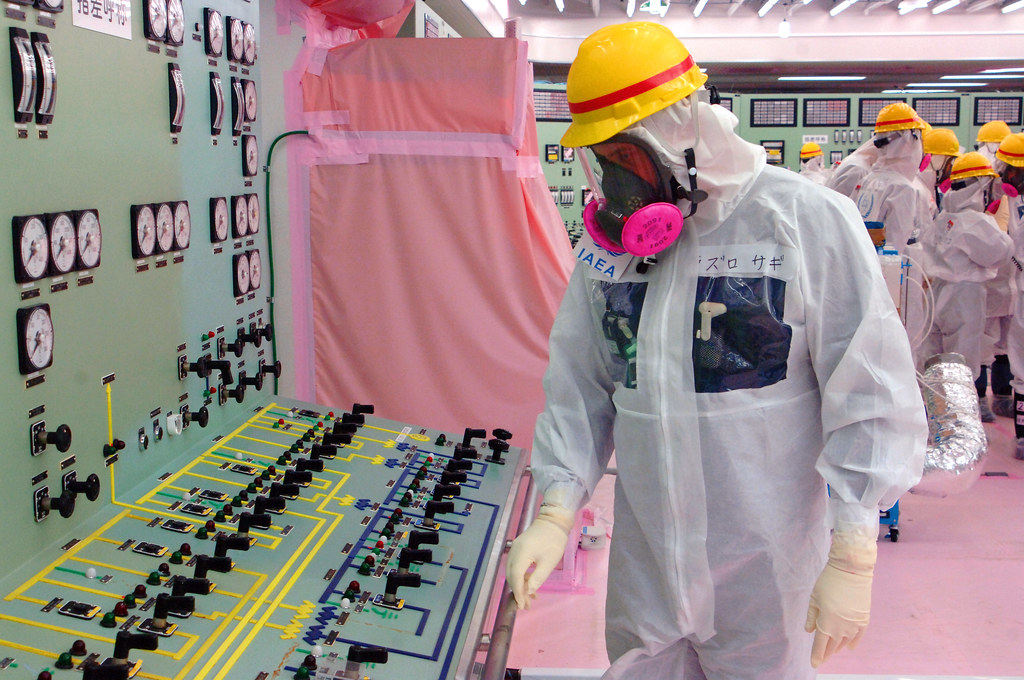Harmonize guidance on radioactivity in food and drinking water reach milestone
The draft of this document was discussed by experts from over 60 countries at a meeting of the IAEA’s Radiation Safety Standards Committee (RASSC) last month.

Proposals to harmonize guidance on radioactivity in food and drinking water in non-emergency situations have reached a milestone with the development of a document based on international consensus on the topic. The draft of this document was discussed by experts from over 60 countries at a meeting of the IAEA’s Radiation Safety Standards Committee (RASSC) last month.
Natural radionuclides
Radionuclides are unstable forms of elements emitting radiation. They can be of natural origin or human-made, but most radiation exposure – except in emergency situations – comes from natural radionuclides. These have been present in varying concentrations in the environment, and therefore in food and water, for millions of years. The most common types of such radionuclides are isotopes of radium, lead and polonium, all of which are naturally present in the environment. These radionuclides are responsible for 90% of the radiation dose received by people worldwide, and countries are cooperating on the harmonization of national approaches that would facilitate international food trade and ensure the protection of the public.
Guidance and recommendations
The outcome of this work is expected to be an IAEA Safety Report, which national authorities can use to establish reference levels for radionuclides in commodities, in line with the IAEA International Basic Safety Standards. The Safety Report on radiological exposure due to radionuclides in food in non-emergency settings is planned to be published before the end of the year.
“In existing exposure situations, people are already exposed to radiation, and national authorities need to decide if actions are required to reduce this exposure, either for certain individuals or for the whole population. Relevant guidance is essential in assessing radioactivity in food and drinking water and to assist in harmonizing guidance across the Member States,” said Haridasan Puthanveedu, Radiation Protection Specialist at the IAEA.
The IAEA, in cooperation with the Food and Agriculture Organization of the United Nations (FAO) and the World Health Organisation (WHO), appointed a Steering Group, which has been working since 2017, to provide science-based international guidance to national authorities to manage radiation doses in food and drinking water. International experts provided further support through meetings to discuss updates and the implementation of the emerging guidance.
The Steering Group recommended that doses be assessed through a combination of diet and food product sampling. Several approaches to diet sampling are routinely used, including a method of sampling where a range of food items are collected from consumer points of sale to reproduce consumption patterns and assess the total radiation dose a person consuming such a typical food basket would receive. Fishery products, for instance, tend to have higher concentrations of some radionuclides than agricultural products, and the consumption patterns of people with a seafood-based diet needs to be taken into account.
“It is important that national authorities establish baselines and identify those foods making the greatest contribution to the radiation dose received by their populations,” said Tony Colgan, who spearheaded this work as Head of the IAEA’s Radiation Protection Unit until his retirement earlier this month.
The establishment of the new framework will also help in case there is radiological contamination of food and drinking water due to an accident. “In the event of a nuclear or radiological accident anywhere in the world, the technical expertise to measure radionuclides in food will be essential for public reassurance and, in certain situations, the basis for imposing restrictions,” Colgan said.
The establishment of reference levels and the development of a method to assess the dose of an individual that is representative of the more highly exposed individuals in the population remain to be addressed. These and other issues will be the subject of a virtual Technical Meeting from 6 to 10 September 2021, organized jointly by FAO, IAEA and WHO.
- READ MORE ON:
- IAEA
- Radiation Safety Standards Committee
- Haridasan Puthanveedu










